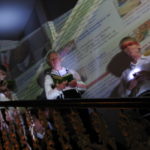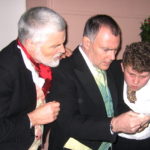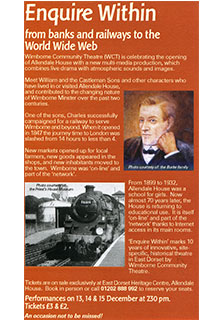The context of the day was very important at the time the property was constructed. William Castleman was responsible for three estates: Hanham, Bankes, and Uxbridge (the Sturminster Marshall area) and was therefore in charge of large tracts of land in Dorset.
William Castleman was the first in his family to be an administrator. He was wealthy and wanted to buy Chettle House, even putting a deposit down, but was disappointed. As a result he bought the land in Wimborne and built Allendale House. At the time this was the cause of much bad feeling amongst the labouring classes.
The house was designed so that no windows faced the general public, except that of the office. The other window on the same floor and elevation was a “blind window” and looked like a window from the outside only. The purpose was to maintain privacy.
All windows facing the town were also “blind windows”.
At the end of the garden was the Poor House.
We can tell to the month when different parts of the building were constructed from chalked dates, e.g. on windows.
The national scene was mirrored in Wimborne, e.g. the Captain Swing riots, and Allendale House was built like a fortress. For example, its walls are thicker than they need be and the lintels are over-engineered.
After the Battle of Waterloo where Napoleon was defeated by Wellington, the Treaty of Vienna was signed. A large number of people were displaced due to men returning home from the war and the Industrial Revolution.
Spencer Perceval, the only Prime Minister to have been assassinated while in office, was killed in 1812 by a businessman from Liverpool who blamed him for his misfortune.
There was depression and much unrest, compounded by the introduction of the Corn Law in 1815, when restrictions were imposed on the importation of wheat until it reached a certain price. The consequence was an increase in the price of bread.
The Peterloo massacre occurred in 1819 in the north west of England when the army was called out to fire on a group of people who had gathered.
The Cato Street Conspiracy took place in 1820 when a group of people tried to destroy the government by murdering all the British cabinet ministers and the Prime Minister, Lord Liverpool. Although this attempt was thwarted, it unsettled the gentry.
In terms of local social context, William John Bankes, having fled the country for discretions of a sexual nature, was no longer able to return legally but did hit land to deliver artefacts that he had collected, which were subsequently placed at Kingston Lacy by William Castleman.




































